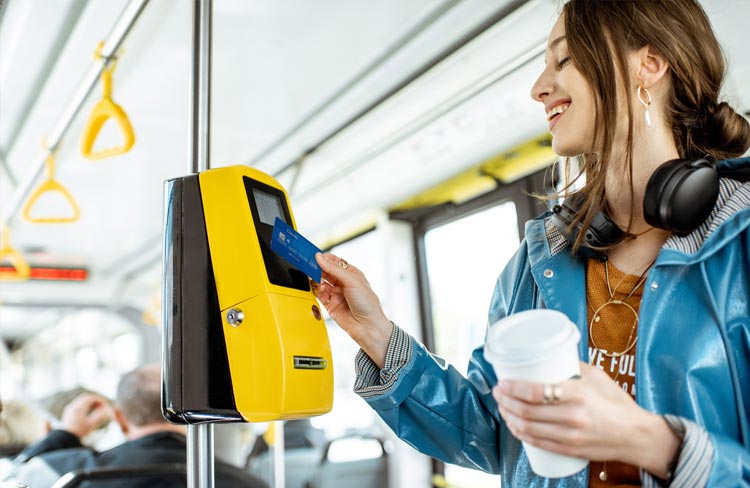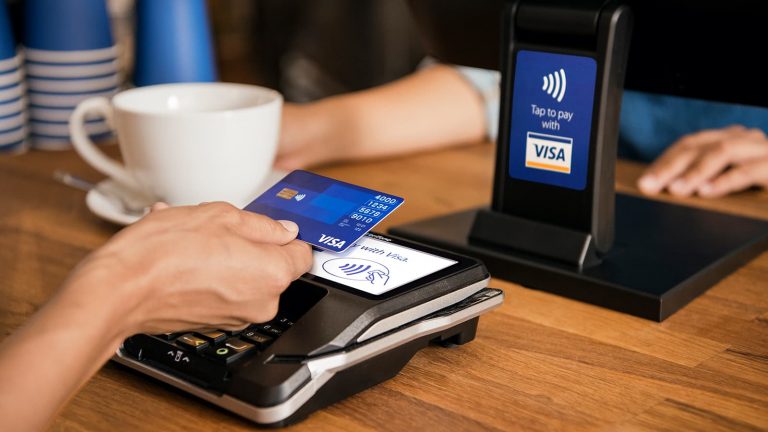Contactless payments represent a modern method of completing transactions without physical contact between the payment device and the terminal.
Utilizing technologies like Near Field Communication (NFC) and Radio Frequency Identification (RFID), contactless payments allow customers to simply tap or wave their card, smartphone, or wearable device near a point-of-sale (POS) terminal to execute a transaction.
What Are Contactless Payments?
Contactless transactions utilize Near Field Communication (NFC) and Radio Frequency Identification (RFID) technologies to facilitate seamless exchanges.
NFC facilitates secure data exchange between devices in close proximity, typically just a few centimeters apart. This allows customers to complete purchases by simply tapping or waving their NFC-enabled card or device near a contactless card machine at the point-of-sale (POS). The quick interaction ensures a swift and secure exchange of information, enhancing the overall shopping experience.
RFID, often employed in the context of contactless transactions, involves tags and readers to transmit transaction information. RFID tags contain embedded chips that store payment data, which is then read by a scanner when brought into range. This technology also supports quick and efficient transaction processes without the need for physical contact or swiping.

These technologies enable quick, efficient, and secure processes without the need for physical contact or swiping, significantly speeding up the checkout process and reducing physical interaction, which is particularly beneficial for hygiene purposes.
Although the terms contactless and mobile transactions are often used interchangeably, they have distinct differences.
Contactless transactions refer to the broader category of exchanges using NFC or RFID technology, including contactless cards and devices. This encompasses any card or device that can perform a transaction without being physically inserted into a terminal.
Mobile transactions, a subset of contactless exchanges, specifically involve the use of smartphones or wearable devices equipped with transaction apps like Apple Pay, Google Pay, or Samsung Pay.
Mobile transactions leverage the same NFC technology but often include additional features such as biometric authentication and integration with digital wallets. These features enhance security and convenience, allowing users to store multiple cards and even other forms of ID or membership cards within a single app, further simplifying the transaction process.
What are the Benefits?

Contactless payments significantly reduce transaction times, allowing customers to complete purchases with a simple tap or wave.
The speed enhances the overall shopping experience, reducing wait times and improving customer satisfaction.
Contactless payments incorporate advanced security features such as encryption and tokenization, which protect sensitive payment information.
These measures reduce the risk of fraud and unauthorized transactions, providing a safer payment environment for both customers and businesses.
By offering a convenient and secure payment option, businesses can enhance customer satisfaction. Satisfied customers are more likely to return, fostering loyalty and increasing the likelihood of repeat business.
The ease and speed of contactless payments also contribute to a positive shopping experience, further encouraging customer loyalty.
Competitive Edge in the Market
Adopting contactless payments can give businesses a competitive advantage.
As consumers increasingly favor this payment method, businesses that offer it are more likely to attract tech-savvy customers.
Staying ahead of technological trends demonstrates innovation and a commitment to meeting customer needs, setting businesses apart from competitors.

